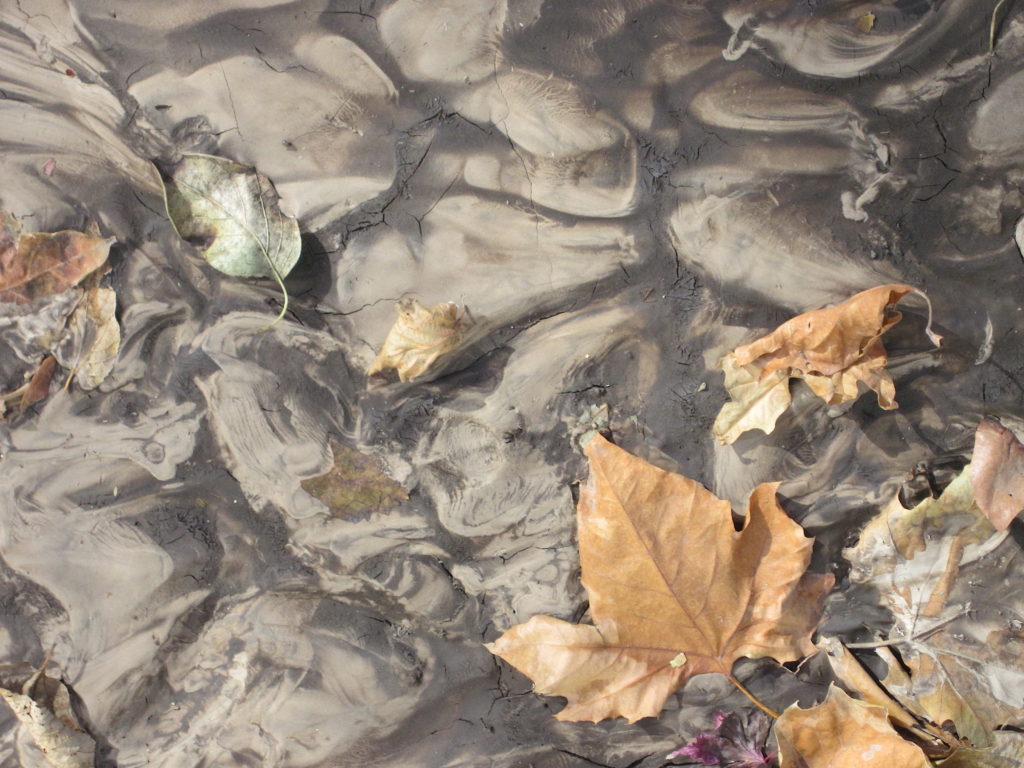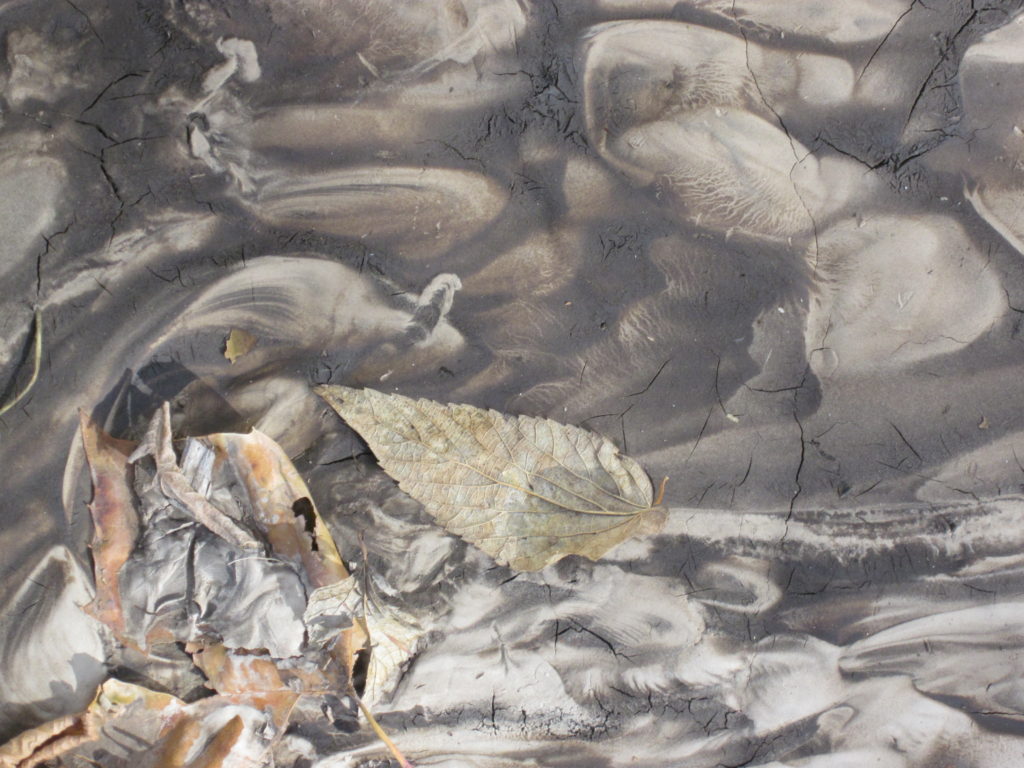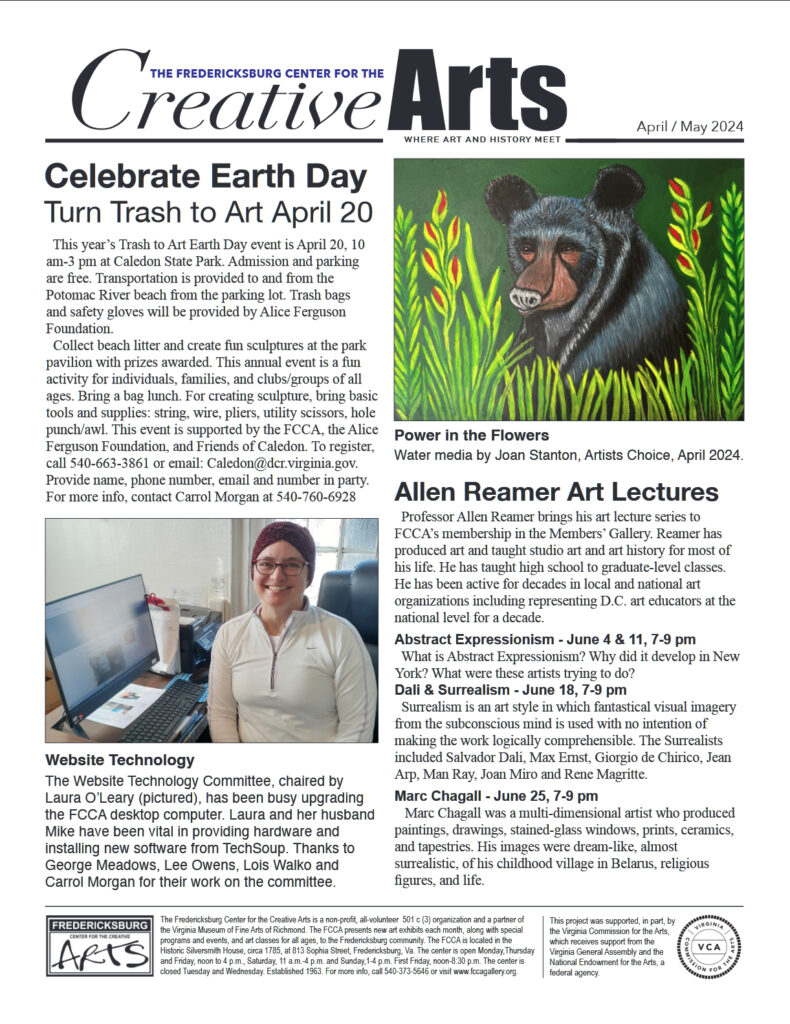Something Calling
Ray Abell
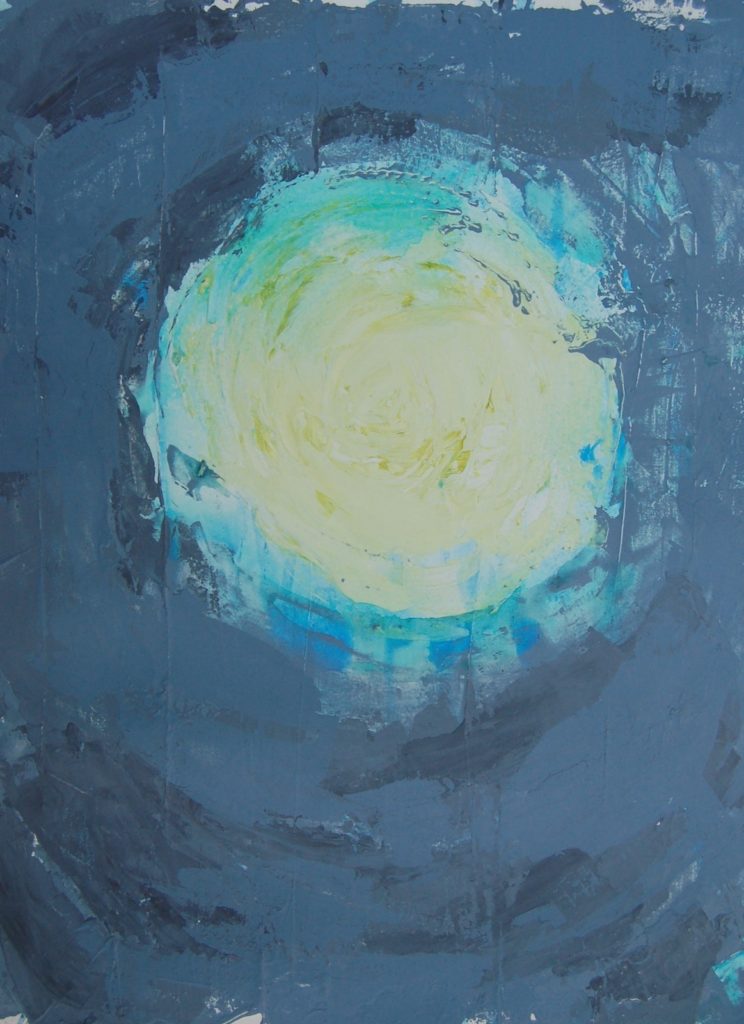
The idea for many of my nature paintings started at the Shenandoah National Park while hiking the trails with my wife Millie. We go to the park during all four seasons and my work draws from the objects, patterns and colors we find on those hikes, such as dried-out cicadas, moss-covered rock, stagnant water and trees – trees in full foliage, lightening-struck bark, decaying trees.
I bring a camera and a sketchbook with me, taking pictures and making small sketches or paintings and writing notes. Back at the studio I work from the photos and sketches, and often create three to five abstract paintings at a time. I use mainly acrylics because they dry fast and I can build up layers without muddying the painting’s foundation. At times I incorporate pastels and graphite into my paintings that enables me to gradually build and layer my works, giving them texture and depth.
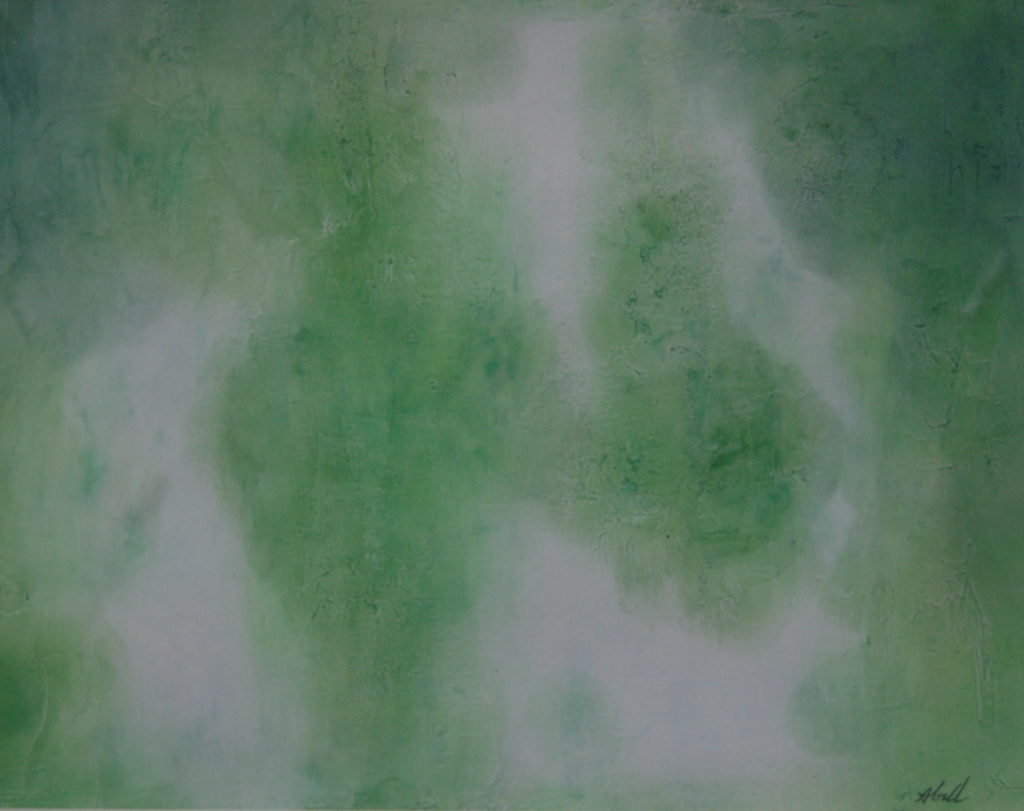
I paint abstractions because they let me best capture and communicate my feelings. For me, abstract painting results in the absence of explicit imagery and my works are extensions of the thoughts, objects, encounters, and events I experience. Color is important to me, but I also value black and white. Although I prefer the early morning light, I also paint the same scene at different times of day and in different seasons to see the way the light has changed the scenery. Rain, frost, dew, and snow all alter my feelings and in turn the viewer’s interpretation. I like the interaction of verbal and visual, and so at times I combine my images with my poems.
I spent three years in Saudi Arabia, and so the desert with its sparse vegetation also has a special attraction for me; even now I look at sketches and photographs and paint and write from them. Some of the things that inspire me include: red and white sands; smooth and sharp rocks; stillness; solitude; the feel of dry desert heat; the smell of soil; the scent of dry and wet rocks, and the sight of dust-covered acacias.
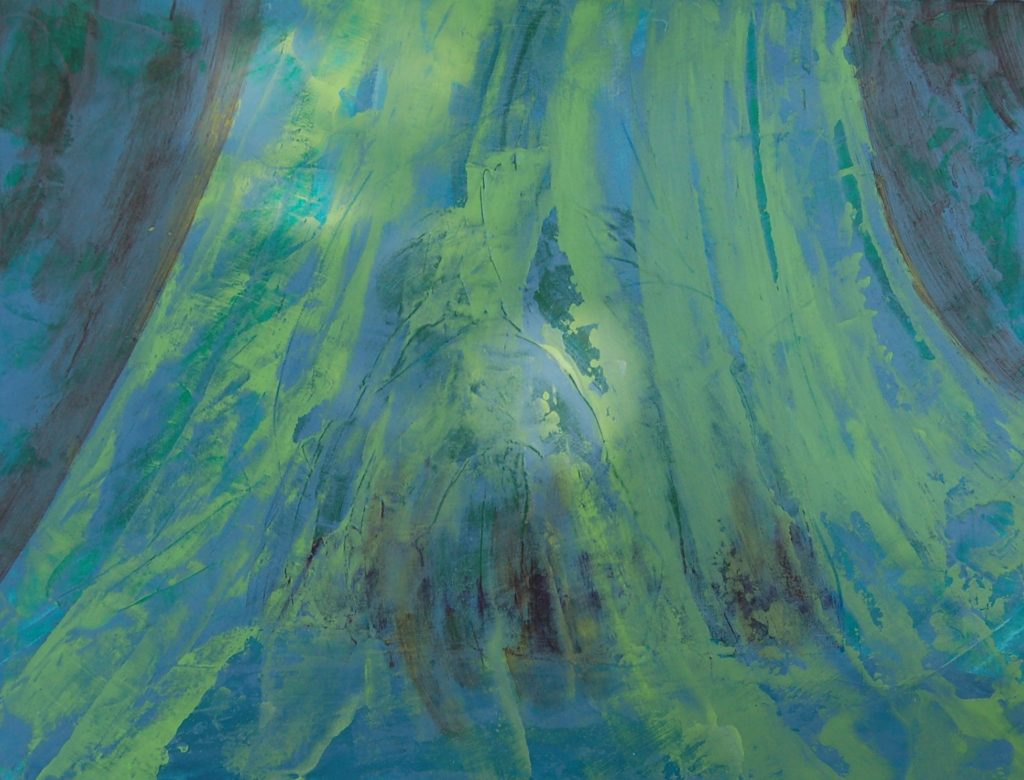
Throughout my life I’ve been drawn to painting, writing, photography and nature. Some of the creators that continue to influence how I interpret the environment are: Mary Oliver and her poetry on the natural world; Wendell Berry and his respect for the land; William Baziotes and his biomorphic paintings evocative of marine life, and the later period of Mark Rothko where his large abstract paintings in reds, yellows, and oranges descend into dark grays and blacks.
I have a BFA in painting from the University of Hartford, Hartford Art School, an MFA in Photography from Ohio University, and an MLS from the State University of New York at Geneseo. I have served as the Fine Arts Librarian at the Rochester Institute of Technology, and have completed the George Eastman House Advanced Studies Workshop in Rochester, NY. I taught Abstract Painting in Acrylics at the LifeLong Learning Society of Christopher Newport University.
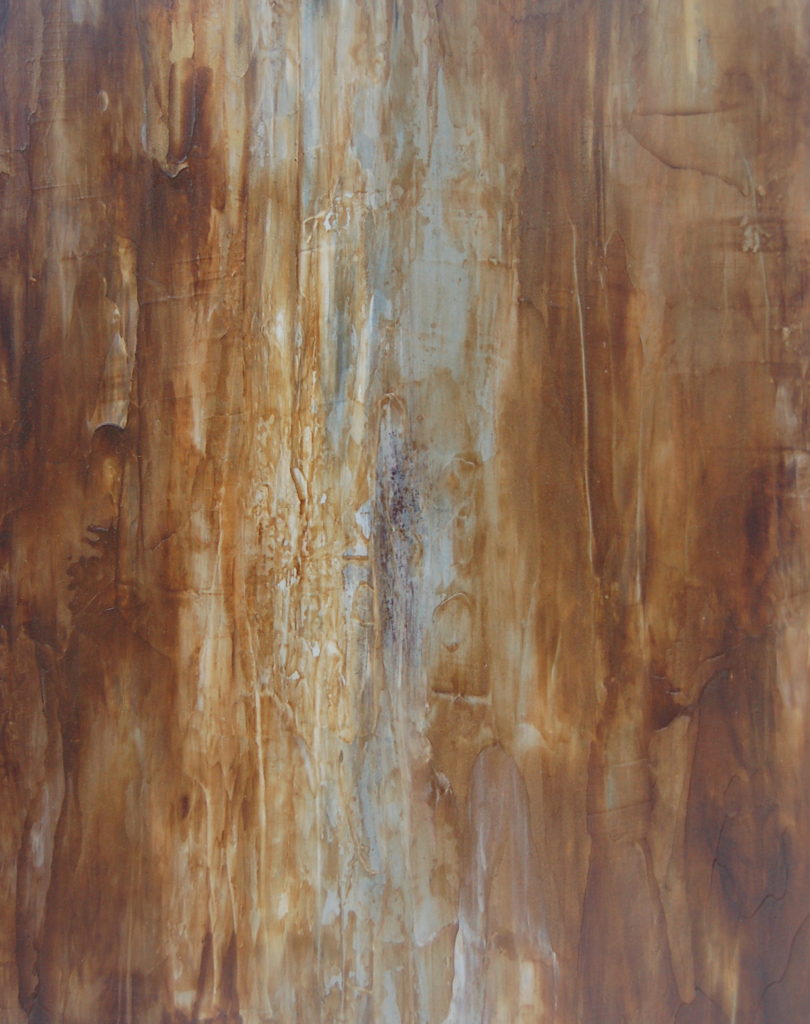
Millie Abell
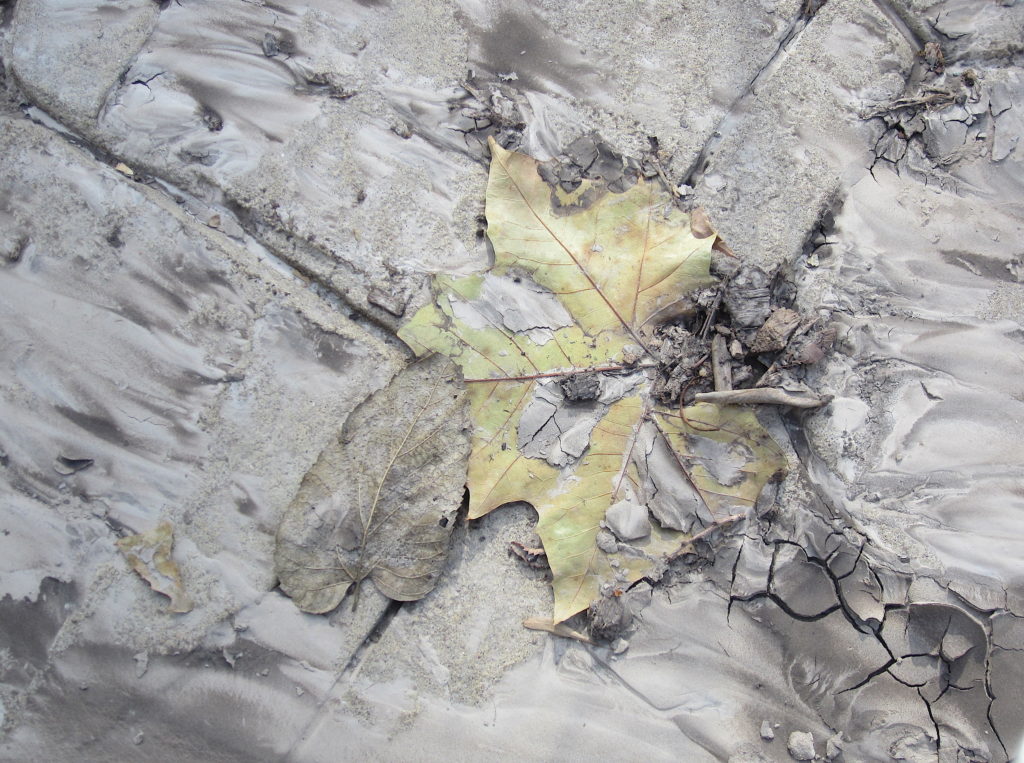
Whether taking photographs or making collages, I sometimes focus on natural objects or social settings that are in the process of changing stages or states – where something is moving on, albeit in slow motion, to a tipping point and another phase of growth. In nature, these can be fallen leaves that give of their colors, shapes, and patterns while decomposing into litter and replenishing soil. At the beach, it may be the history a mollusk etched on its broken shell before biodegrading into sand. In a social setting it may be a college bulletin board in June, shot through with staples and shards of flyers, signaling the end of the school year with all the enrichment that went on outside of class. I’m interested in capturing the point where, in an ending, there’s also an expectation of something new to come.
I’m a novice photographer who wants to pay attention to the overlooked – life’s “mundane miracles”-- so that I can acknowledge their histories and imagine unfolding futures.
